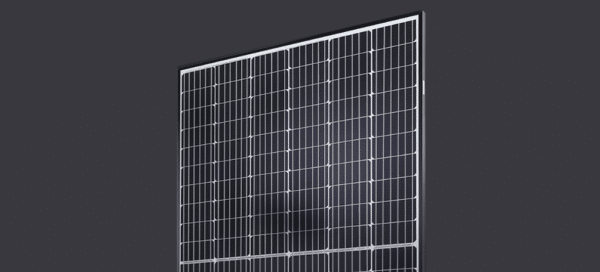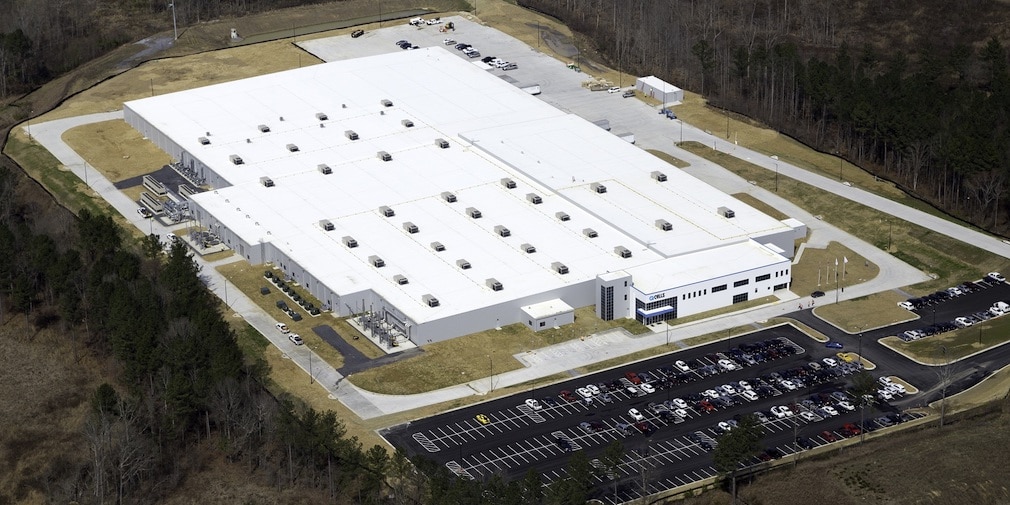Friday was a big day for U.S. module manufacturing. Hanwha Q-Cells, the Korean PV maker which acquired Germany’s Q-Cells seven years ago, has officially opened the biggest solar panel factory in the Western Hemisphere, with 300,000 square feet of floor space and 650 workers.
Of course opening is always a relative term. Friday was the big ribbon cutting with officials from Korea, Georgia Governor Brian Kemp (R) and even a token presence from the Trump Administration, but the factory has been churning out modules for months; every solar factory must go through a lengthy process of equipment tests and calibration, and then will be slowly producing more and more modules (ramping) until it hits its full production volume.
Hanwha Q Cells executives report that the factory began production in January and started shipments in February, and that all three production lines are currently running. “The factory is currently producing over 10,000 modules per day and very close to the full 12,000 module per day capacity,” Hanwha Q Cells Director of Strategy and Market Intelligence Scott Moskowitz told pv magazine. “We expect to be running at full capacity by the end of the year.”
The factory will make modules with 120 half-cut mono-PERC cells in the company’s Q.PEAK DUO BLK-G6 line. These have six busbars, around 19% module efficiency and a wattage of 330-345 watts, which is not bad for what would be a 60-cell module in full-cell terms.

These modules are being sold into both the rooftop and large-scale ground-mounted solar markets. While 72-cell modules are more popular for large PV plants, some of the projects that will utilize these modules are Facebook’s new data center in Georgia.
Trump, tariffs and taxes
Greentech Media has cast this as a win for Trump’s trade policies, but there is a lot of nuance here. Four large solar factories are either under construction, ramping or have opened in the United States since Trump imposed the Section 201 tariffs: Hanwha’s 1.7 GW factory in Georgia, LG’s 500 MW factory in Alabama, Jinko Solar’s 400 MW factory in Florida, and First Solar’s 1.2 GW factory in Lake Township, Ohio – which is currently under construction.
It’s a safe bet to say that these would not have happened without the Section 201 tariffs giving a relative edge to product made in the United States. But as every one of these companies has told pv magazine, they also probably would not have happened without the changes to the U.S. tax code under the tax reform rammed through by Republican majorities in Congress in late 2017.
Also, while these factories and a the smaller ones that had held or or started back up total around 5 GW of capacity, the United States is expected to install more than 12 GW of solar this year – more than double the nation’s entire module capacity.
Also, the cell sector is almost completely missing in the United States. There are no merchant cell factories in the United States, and all of the crystalline silicon factories that have recently ramped up import cells from overseas. In fact, the one big integrated cell and module factory in the United States – the Tesla/Panasonic Gigafactory in Upstate New York – does not appear to be producing much.
As such, the minor revival of U.S module manufacturing that these factories represent does not change the fundamental nature of trade flows or manufacturing in the solar industry; the United States still overwhelmingly installs imported solar products, mostly from Asia.
Update: This article was updated at 10:12 AM EST on September 23 to include more information on the ramping of the factory.
This content is protected by copyright and may not be reused. If you want to cooperate with us and would like to reuse some of our content, please contact: editors@pv-magazine.com.









Anyone want the engineering design for these modules.
From start to finish PowerPoint style.
“Friday was a big day for U.S. module manufacturing. Hanwha Q-Cells, the Korean PV maker which acquired Germany’s Q-Cells seven years ago, has officially opened the biggest solar panel factory in the Western Hemisphere, with 300,000 square feet of floor space and 650 workers.”
Should be able to use at least 250,000 square feet of that roof for around a 20MW solar PV generation array. Probably around 20 to 30% of the energy required daily. What if it was stored into an energy storage system during the day, while the plant uses power produced by the “duck curve”, then the stored energy from the solar PV could be used in late afternoon and early evening during the TOU rates of the day. Actually getting rid of demand charges may make the manufacturing costs drop more than just a simple solar PV peak use of generation during the daylight hours. Power shifting and arbitrage will make the system more useful and more cost effective over time.